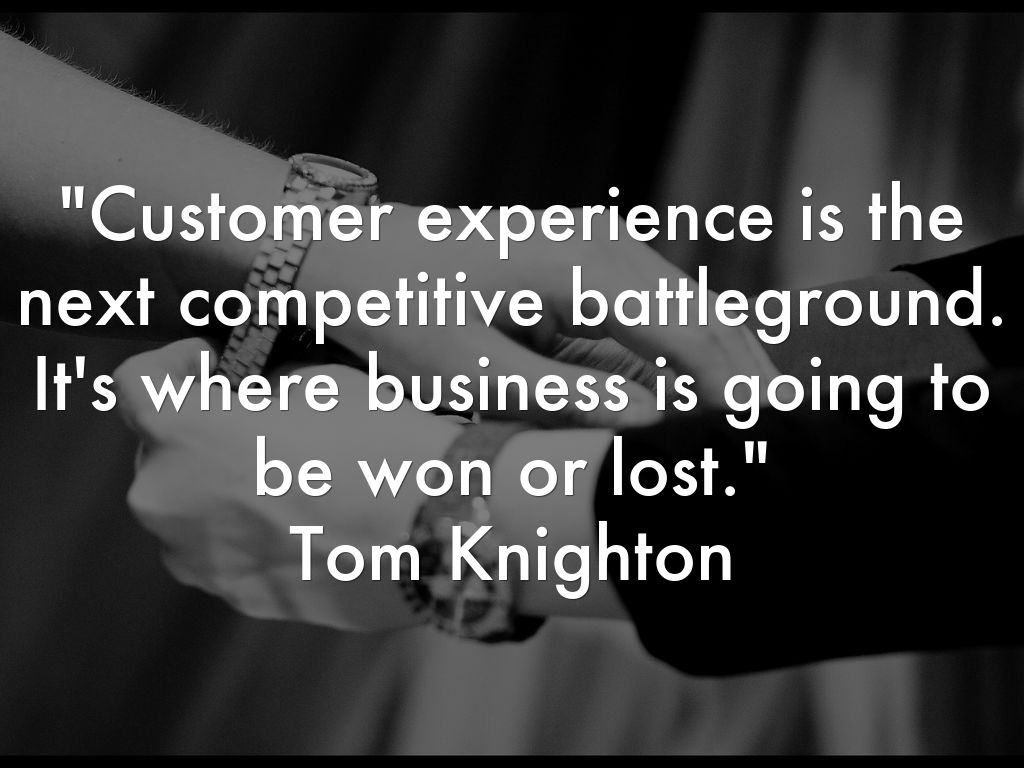How to keep a bad customer experience from destroying your business
A bad customer experience can have an inescapable ripple effect that can bring down a business’ reputation, sales, and staff engagement.
All it takes is one sour customer to share their experience on Facebook, Instagram, or Snapchat, and it could explode into thousands rallying to bring down a brand they loved until merely seconds earlier.
Just head to Twitter next time you hear about a telecomm-provider going down and watch the angry mobs flock.
Scarily, a study conducted by Sprout Social revealed more than 80% of customer complaints are ignored on social media.
While there are countless ways to combat negative feedback, one of the most effective tactics is to prevent the bad customer experience from occurring at all.
This must start by prioritizing customer service throughout the organization.
Businesses need to get their (customer service) act together
With Forrester predicting one-third of companies in the B2C space “will begin changing their business structure to get closer to the customer and effectively compete on the basis of experiences”, we should see the majority of companies shifting their business goals and sales targets to focus on customer service.
However, while there are a select few, such as ANZ and Telstra paving the way in this area, this still is nowhere near the norm, and much more needs to be done before customer service is prioritized to the point where it can actually impact a business’ bottom line.
So where do we Start?
It’s one thing to say you’ll invest in customer service, but it’s another thing to actually do it.

Here are a few ways to ensure your business walks the walk in prioritizing customer experience:
1. Begin by mapping your customer experience and find bottlenecks in the process. Where are customers getting caught up in your business service?
This is also known as Customer Journey Mapping. Now Customer Journey Mapping doesn’t stop at purchase as you may think it would. Mapping your customer experience must extend to the transformation of your customer from a buyer to a raving brand advocate.
Here are 2 high-impact methods for mapping your customer journey:
- Use Google Analytics and your CRM system to look for bottlenecks and drop off points in your customer’s journey to purchase or clicking the ‘Contact Us’ button.
- As a CEO, CMO or CXM, step into the shoes of your customer and either
a) Take the ‘Uncover Boss’ approach or
b) Experience the journey alongside your customer.

2. Change your sales incentives and customer facing schemes to prioritize customer service
Setting company KPI’s around Customer Experience is one of the most effective ways to remove the “guessing game.”
KPI’s can include:
- Time taken to contact a new inquiry
- Time taken to respond to a problem
- Time taken to resolve the problem
- Customer Churn Rate
- Average Lifetime Value of a customer
- Average handling time
- Average Net Promoter Score
- Customer Satisfaction Score
3. Invest in researching customers’ needs and wants to direct product development and design
With simple surveys via email or social media now available in abundance, collecting data about your customer’s needs and wants has never been easier.
Telstra Case Study
Telstra has invested tens of thousands of dollars, probably more, into researching customer’s wants and needs and designing products to suit their needs.
The Telstra 24×7 app is the perfect example of a new customer experience that completely revolutionized the way processes were currently being managed, reducing man hours needed, paper wasted and putting the experience in the hands of the customers.
Let’s take the customer process of requesting an extension of a phone bill…
To get an extension for a phone bill, traditionally you’d need to painfully wait in a phone queue to speak to the customer service team. This customer service team was also growing at a rate that was becoming a huge expense to the business.
The customer would need to allocate their precious lunch breaks or early in the morning to do this simple ‘life admin’ task.
Once in touch with a service provider to request a bill extension, that service provider would then use a few simple online tools to come to a decision of how long the extension should be.
Cutting out the service provider (RIP jobs lost to technology) Telstra flipped that process on its head and gave their customers the power to instantly extend their phone bills with a two-step in-app process. It gave customers the power to manage their billing, usage and customer service issues via the app.
To ‘put the icing on the cake’ Telstra introduced Telstra Thanks into the app, offering customers gifts such as discount movie tickets.
The result was a drastic increase in customer satisfaction, reduced the time from problem to resolution and saved the business money.

4. Provide channels for constant and in-depth customer feedback, and empower teams to act quickly on addressing opportunities for improvement.
There are three simple ways to gather in-depth customer feedback:
- Measure customer satisfaction after each interaction through the use of over the phone surveys or using simple survey tools such as Survey Monkey.
- Introduce a Net Promoter Score to measure how likely a customer is to recommend your company.
- Use Customer Support platforms to gather and measure data.
There is a great list Customer Service software platforms available online, you can check it out here!
It’s integral that this data is analyzed and delivered to the team quickly so they can address opportunities for improvement.
With the introduction of Artificial Intelligence and Chat Bots, businesses will soon be able to automate data analysis through machine learning and use Chat Bots to improve efficiencies in an expensive customer service centers.
5. Appoint a Customer Service Officer (CSO) and/or Customer Experience Officer (CXO) whose key responsibility is to optimize customer service and customer experience by liaising with all teams and departments throughout the organization.
A study by New Voice Media revealed that businesses are losing up to $62billion due to bad customer experiences, which is why more than 70% of businesses are investing heavily into customer directed roles in upper-level management.
The most important part of a Customer Service or Experience is also designing a culture that empowers employees to drive customer experience and understand how to provide products and services that meet the customer’s needs and wants.

Start today
Tackling the gamut of ‘customer experience’ while protecting your business from any chance of negative feedback is an overwhelming challenge which can’t be solved overnight.
While this should be a priority for companies and included in business strategies, it is more important to put in preventative measures to ensure negative experiences don’t have an opportunity to get out of hand.
Invest today in improving customer experiences and you’ll undoubtedly increase customer satisfaction whilst creating new opportunities to drive revenue.
Jess McCorkill
Latest posts by Jess McCorkill (see all)
- How to keep a bad customer experience from destroying your business - February 9, 2017
- Buzinga Ranked In Australia’s Top 10 Coolest Tech Companies 2 Years In A Row - November 18, 2016
- Buzinga App Development A Winner At Anthill’s 2015 Cool Company Awards - December 8, 2015





